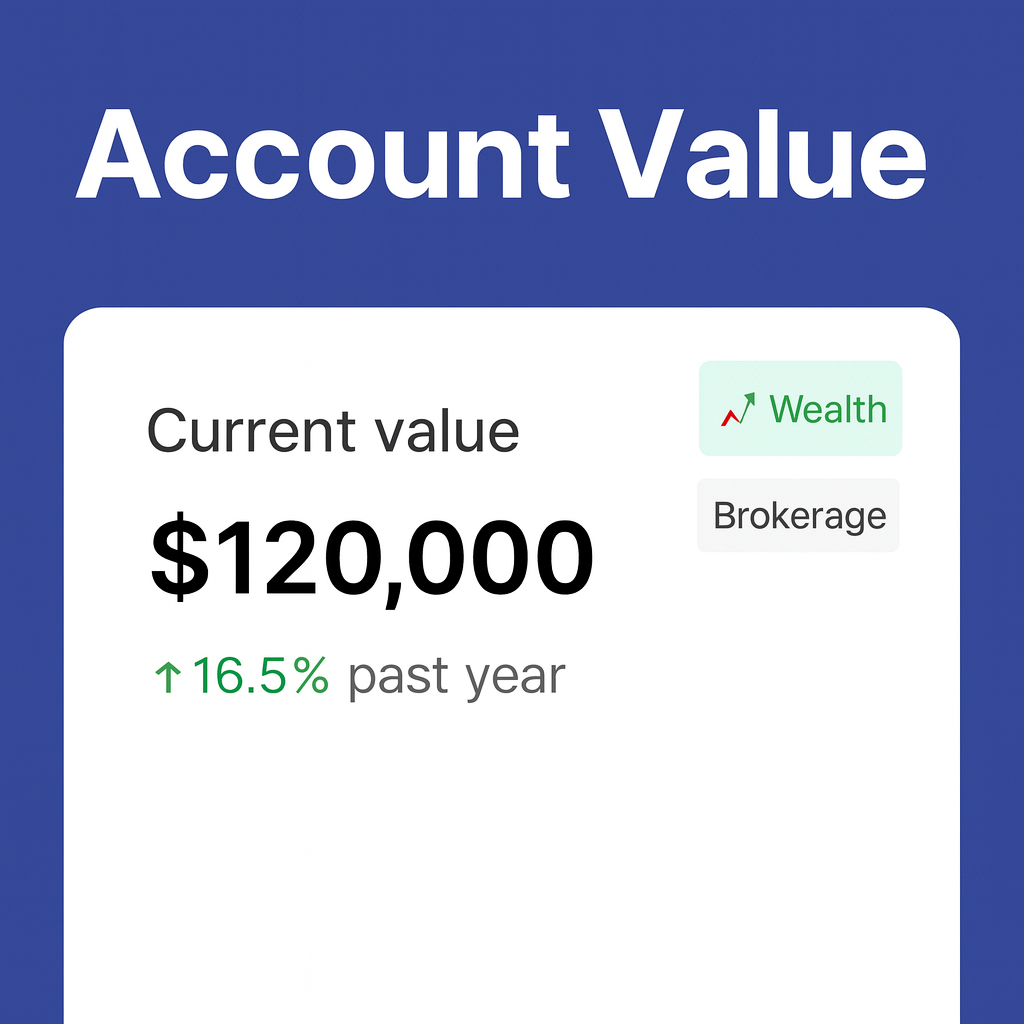What 600+ Conversations With Millennial HNIs Taught Me About Trust

I spend a big chunk of my 2025 doing something that doesn’t show up on any dashboard:
Talking to millennial HNIs about their money.
Not a polished “discovery call.” Actual, messy conversations - RSUs, startup equity, six different brokerages, random angel bets, half-finished plans, and a constant feeling of “I’m doing okay… but I’m not sure I’m doing this right.”
After 600+ of these, one pattern is impossible to ignore:
The core question is rarely “Can you get me higher returns?”
It’s almost always “Can I trust you with the full picture of my wealth?”
Here’s what I’ve learned about trust from a techie-founder seat, building a modern wealth platform for this exact audience.
The trust test starts long before you ever meet
By the time someone books a call with us, they’ve already done their homework.
Typical pre-call behavior:
- They’ve checked LinkedIn and our background (Microsoft / Snapchat / Datadog / etc.)
- They’ve read reviews, or quietly pinged a friend who works with us
- They’ve lurked on our content for weeks or months
- They’ve screenshotted something we said and debated it with a partner or friend
So when they finally hit “Schedule,” they’re not testing intelligence. They assume we’re competent.
The real question running in their head is:
“Are you another advisor who will eventually push me into whatever’s best for you… or someone who will actually sit on my side of the table?”
From a founder's lens, this changes how I think about “marketing.”
Our site, content, and product UI aren’t just acquisition tools - they’re part of the trust surface area.
If it looks sales-y, jargon-filled, or “product-first,” the conversation is already starting at a trust deficit.
They’re not starting from zero - they’re starting with Inherited Distrust
Most of the people I talk to have seen the old model up close:
- Parents with a traditional advisor
- Assets locked into one firm, one custodian, one product set
- Quarterly meetings with lots of charts, very little explanation
- Fees that were “just how it works”
Now these same kids are adults with very different financial lives:
- RSUs, ISOs/NSOs, refreshers, bonuses
- Multiple job hops, multiple 401(k)s
- Brokerage accounts across Fidelity, Schwab, Vanguard, Robinhood, etc.
- Startup equity and angel deals on the side
When they say “I don’t want my parents’ advisor,” they’re not being rebellious. They’re reacting to a system that felt like:
- Opaque
- Product-pushed
- Misaligned on incentives
The core theme I hear:
“I don’t want to give up control just to get advice.”
They’re fine sharing data. They’re not fine surrendering control.
The sentences I keep hearing on repeat
Across conversations, the phrasing changes but the intent is scary-consistent. A few real ones:
- “I’m happy to pay. I just don’t want to feel tricked.”
- “My last advisor kept trying to ‘upgrade’ me into stuff I didn’t understand.”
- “I don’t want to move my money. I want someone to tell me what to do with what I already have.
- “Everyone optimizes one account. No one looks at my life end-to-end.”
- “Please don’t give me a generic 60/40 and call it ‘personalized’.”
Notice what’s missing:
No one leads with “Can you beat the S&P?” or “What’s your alpha?”
They’re asking for:
- Transparency over theatrics
- Alignment over fancy pitch decks
- Whole-life thinking over account-level optimization
As a founder, this is both humbling and clarifying: if the pitch leans too hard into “we’re smarter,” we’ve already missed the point.
The things they don’t say, but you can feel
There’s also the subtext - the behavior you notice once you’ve done enough of these.
Hesitation to link everything.
Not because they’re hiding. Because they’re thinking:
“If I show you everything, are you going to use this to sell me harder?”
On-and-off DIY.
They oscillate between:
“I’ll just do this myself with spreadsheets and Reddit,”
and
“Okay, this is too much, I need help.”
Usually that swing happens after:
- A rough market year
- A big unexpected tax bill
- A life event (marriage, baby, house, liquidity)
Quiet anxiety about being “behind.”
These are objectively successful people. But the internal dialogue sounds like:
“Everyone else at my level seems more put together with money. Am I the only one improvising?”
If you’re building for this segment, how you respond here matters.
The most trust-building move I’ve seen:
Treat their current portfolio as a story, not a set of mistakes.
“Walk me through how this came together” lands very differently from “Why did you do this?”
How trust actually gets built (It’s not a big ta-da moment)
From the outside, you might think trust is built with some brilliant strategy or backtested chart.
From the inside, it’s surprisingly boring and operational.
Start With the Full Graph, Not a Node
The highest-trust moment in most early calls is not when we show performance.
It’s when we show them their own life in one place:
- RSUs and company stock
- 401(k)s from every job
- Brokerage accounts
- Cash, emergency fund, HSA
- Real estate, rental properties
- Debt, loans, credit cards
- Private investments
Almost every time, I hear some version of:
“Wow, no one has ever put all of this together for me like this.”
That’s not a product feature. That’s a trust unlock.
Explain the “why,” not just the “move”
“Sell 20% of your employer stock” is a command.
“Here’s why we’re trimming 20% - this is the concentration risk, this is the tax impact, here’s how it funds X goal, and here’s what happens if we don’t” - that’s collaboration.
Trust = “I might not love every answer, but I understand the reasoning well enough to sleep at night.”
Put Fees on the Table Before They Ask
Millennial HNIs are extremely fee-aware. They’ve seen:
- % AUM fees layered on top of fund fees
- “Free” that is monetized through product placement
- Hidden incentives
So we’ve learned: if you wait for them to ask, you’re already behind.
Trust-building move:
- Proactively explain how you charge
- Clarify what’s included / not included
- Compare it honestly to traditional 1% AUM + product fees
If you’re confident in your model, you shouldn’t be afraid of simple math.
Be Explicit About Downside Scenarios
Markets will drop. Targets will be missed. Life will throw curveballs.
Millennial HNIs don’t expect perfection. They expect clarity:
- “What do you do when things go wrong?”
- “How often do you review and adjust the plan?”
- “What kind of communication do I get in a drawdown?”
If your only script is for bull markets, your trust is one cycle away from breaking.
Tech helps - until it starts replacing judgment
As a techie, I’m obviously biased toward software. But here’s the honest view from the conversations:
Where tech boosts trust:
- Aggregating everything into one view
- Making risk, allocation, and progress visually obvious
- Running “what if” scenarios in seconds
- Keeping the plan updated as inputs change
Where tech kills trust:
- When recommendations feel templated or opaque
- When the system outputs something and no one can explain why in plain English
- When there’s no human available when anxiety spikes at 11:30pm after a bad market day
The combo that seems to resonate most:
Tech for precision and visibility.
Humans for judgment, trade-offs, and context.
They don’t want an “app instead of an advisor.”
They want an advisor who actually uses technology like a modern operator, not a PDF generator.
Control is the hard line
If there’s one non-negotiable across almost every millennial HNI I’ve spoken with, it’s this:
“I want advice on everything. I don’t want to feel trapped anywhere.”
Control, to them, means:
- They’re not forced to move all assets to one firm just to get advice
- They understand what’s happening and can say “no”
- They know how to exit if they ever feel uncomfortable
- They retain visibility and ownership over accounts
The paradox:
The more we design the relationship so they can walk away, the more they actually lean in and stay.
If you’re a millennial HNI reading this
If any of this feels uncomfortably accurate, that’s kind of the point.
A few questions I’d encourage you to ask any advisor or platform (including us):
- “Will you advise me on all my assets, even if you don’t directly manage them?”
- “Do I have to move my money to work with you?”
- “Exactly how are you paid? By me, by products, or both?”
- “Can you show me what ‘good’ looks like in my situation before we talk about products?”
- “What happens in a bad year? What does communication look like then?”
You’re not being “difficult” for asking this. You’re being responsible.
What these 600+ conversations changed for me as a founder
When we started building, I thought the story would mostly be about:
- Better data
- Better models
- Better performance
All of that matters. But if I zoom out, the real lesson from these conversations is simple:
Millennial HNIs don’t just want someone to grow their capital. They want someone they can trust with the full complexity of their life.
Their money story is not clean:
It’s startup rollercoasters, layoffs, big promotions, cross-country moves, equity grants, failed side projects, and all the emotions attached to each.
If you’re building in this space, or trying to choose who to work with, I’d keep one filter front and center:
Does this person/platform make me feel more in control and more understood…
or more dependent and more confused?
For this generation, that’s the real trust test.


.png)
.jpg)
.png)
.png)
